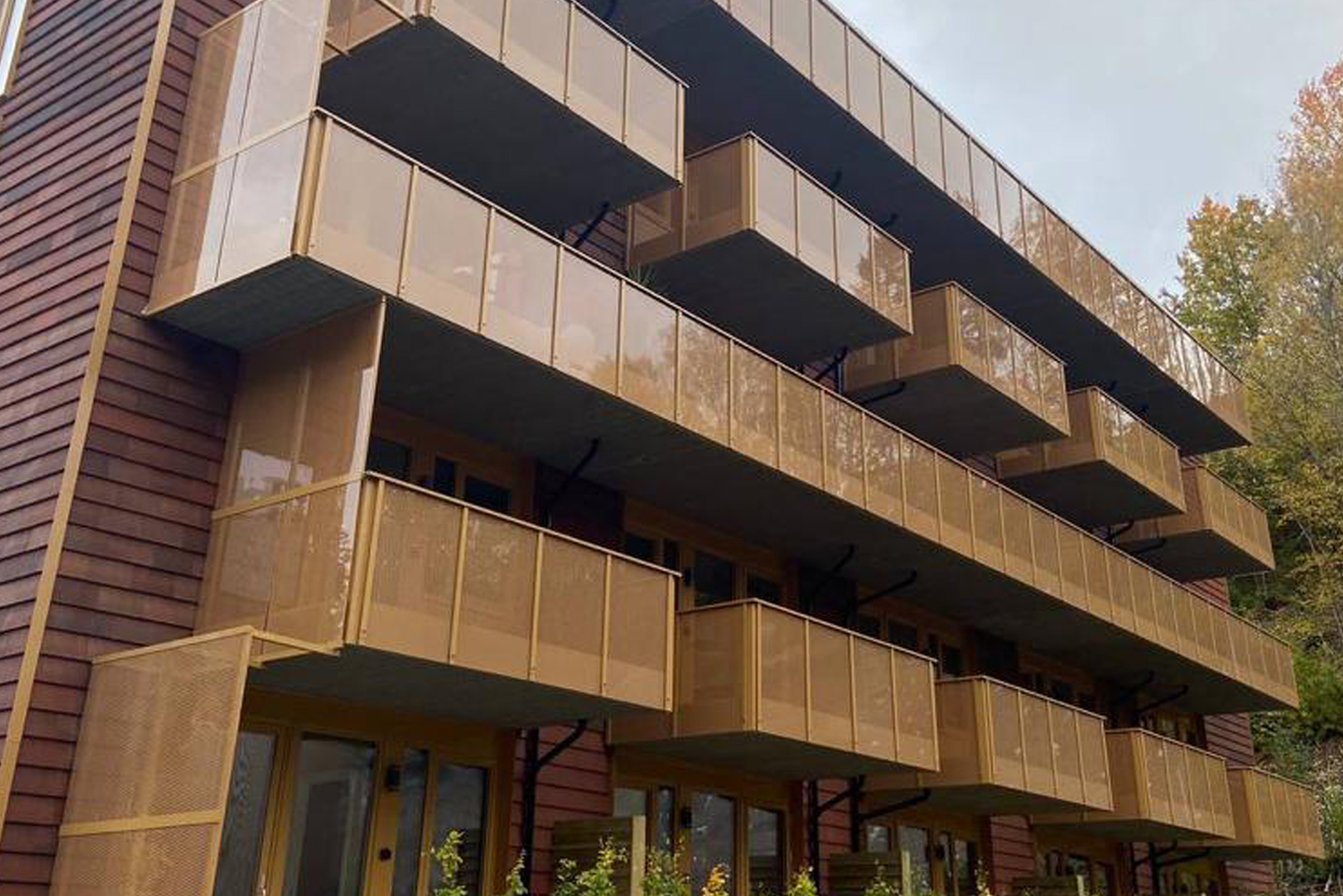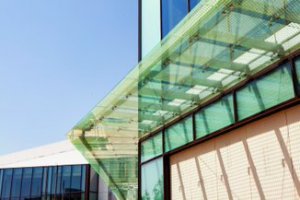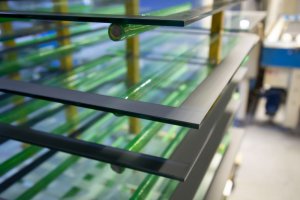It is used in furniture, showr cabinet, white goods, lighting, office partition glasses as desired patterns can be applied by screen printing technique. Additionaly it allows light and solar control with dot pattern sergirapy printing on facades and skylights.
The complete surface of glass can be coated with enamel paint by using Roller Coating method and dframe coating can be done as desired. Frame printing with roller coating is much faster and gives better quality results.
Full surface painted glasses can be used in furniture, wall and floor covering, glass doors, etc.
Each desired color can be prepared and applied to glass surface.
Screen Printed Glass Turkish Manufacturer - Turkey
- It may be necessary to create a picture on the surface of the glass whose edge processing processes have been completed, to color the entire environment or some areas with paint, or to color the entire surface with paint.
- Printing methods are as follows;
- silk printing
- Roller printing (steel roller, rubber roller)
- Digital printing
- manual printing
- One or two prints can be made on the glasses.
- Colors are defined as RAL Number. The color range is wide. Some colors are created at the factory as a mixture of standard colors.
- Printed glasses must be tempered.
- It affects the optical properties of the glass according to the way of printing.
Enamel painted glass; It is obtained by applying ceramic paints on glass and applying heat treatment. The paint application on the glass; is made by silk screen printing, roller dyeing and curtain dyeing methods. Since a homogeneous thickness cannot be obtained, the spray-painting method is not preferred. The area to be painted should be a closed environment with positive pressure inside, isolated from the external environment, covered with a dust-free coating. Glasses to be painted should be washed before painting and passed through a drying oven after painting. Holes and blistering may occur in the paint as a result of the rapid evaporation of the paint thinner on the glasses that enter the tempering oven without being well dried. The temperature and humidity values of the painting room should be checked, the ventilation system should be operated. The line's emergency stops, operability, air pressure, and moving parts had to be checked. The washing machine should be prepared. According to the work order, if the screen-printing method (silk printing) will be dyed, the pattern suitable for the technical drawing should be selected, and the pattern size should be checked. The squeegee and scraper suitable for the glass size should be selected. The cleanliness of the silkscreen should be checked, it should be connected to the machine later.
Glass squaring settings should be made, and a squeegee and scraper should be connected to the machine. The distance between the glass and the mold should be adjusted according to the glass thickness. It is adjusted according to the size by determining the tin surface of the glasses to be printed. The tinned surface of the glass is not painted. Using the appropriate mixer and thinner, the paint is prepared at the desired viscosity measurement value. Uses chemical-resistant gloves and masks during paint preparation. The temperature and speed of the drying oven are adjusted, and then the machine operation and printing process are started.
PAINT PROCESSING PRINCIPLES
• Paint application on the glass; silk screen printing, roller dyeing (roll printing), and curtain dyeing methods. It is not preferred because a homogeneous thickness cannot be obtained by the spray-painting method.
• The area to be painted should be done in a closed environment with positive pressure inside, isolated from the outside, and covered with a dust-free coating. Glasses to be painted should be washed before painting.
• Paint should be applied to the tin-free surface of the glass.
• After the painting process, the painted windows should be collected by passing through the paint drying oven, and should not be dried in the open environment in wet conditions or on carts with shelves.
• In paint preparation, the recipe of the mixed dyes must be kept under record, and this mixture must be prepared by weighing the dyes on the scales, mixing them with a mixer, and measuring their viscosity. Paints should not be prepared by measuring by hand and mixing them by hand.
• The temperature of the paint preparation room should be 5-20 0C, with a maximum of 60% humidity. The paint to be mixed should be kept in such an air-conditioned room for one day and used.
• Before the paints are used, they should be mixed for at least 2 hours with a paint mixing mixer fixed to a wall or a pole, whose speed can be adjusted (50 - 60 rev/min).
• Serigraphs should be stored in a vertical position so that they do not damage each other.
• Unused paints should not be stored outside in the painting room.
• Materials used for paint cleaning should be collected in closed waste containers.
• Painted glasses prepared as samples should be labeled and archived. The name of the customer, the paint recipe, the thickness of the wet paint, and the name of the company from which the paint is supplied must be stated on the label.
• After the paint is applied to the glass, the wet paint thickness should be measured. L, a, b values after the glass is painted should be written on the label.
• Glasses that have been painted and passed through a drying oven should be stacked with appropriate separators that will not damage the paint.
PRODUCTION CONTROLS
- Template silk angles should be at an angle suitable for the manufacturing quality. (For quality details)
- While preparing the screen-printing pattern, a certain amount of appropriate space should be left in the width and length of the pattern. (To prevent paint build-up, traces at the entrance and exit)
- The stencil silk emulsion thickness should be in accordance with the criteria that will not impair the print quality. Control should be done.
- The stencil emulsion thickness should be checked on the printing surface.
- The stencil exposed pattern should be checked for sawing or defects.
- Is the squeegee hardness of the printing machine suitable? (The desired hardness must be suitable)
- Is the scraper hardness of the printing machine suitable? (Must be at desired shore value and desired material type)
- Whether the squeegee print surface sharpening is appropriate or not, its suitability for print quality should be carefully checked.
- Is the scraper pressure surface sharpening appropriate or checked?
- Is the squeegee pressure appropriate, should it be checked and adjusted at the appropriate pressure?
- Is the scraper pressure appropriate, should it be checked and adjusted at the appropriate pressure?
- Template silk angles should be at the appropriate angle. (For quality details)
- The stencil silk must be of suitable quality. (For quality details)
CONTROLS
Thickness and dimensional tolerances of glasses
It is given in EN12543. Glasses that are out of this tolerance are separated incorrectly. Controls are made based on factory standards related to the dyeing process. Factory standards must be agreed upon with the customer at the order stage.
Examination of point and linear errors on the glass
The glass to be examined is observed in front of a matte black screen (with a reflectance coefficient of 0.2-0.4) illuminated in daylight (shade in sunny weather or under a daylighting lamp). The glass plate to be examined is placed vertically in front of the screen and made parallel to the screen. The glass is viewed from a distance of 2 m in a vertical position. Detected errors on the glass plate are recorded.
Linear fault tolerances
The linear error should not be seen when viewed from 2 m.
Inspection of tinted glass (in reflection) The tinted glass should be observed against an unlit background, the glass side, in a vertical position with the naked eye and at a distance of 1 m under normal diffused lighting conditions. Each examination will last 30 seconds. The observation direction should be normal vertical. Using an additional lighting source, e.g., a spotlight is not allowed. Defects on the painted side are acceptable as long as they are not visible from the glass side. Note - Normal diffused light conditions are assumed to be natural daylight or simulated daylight illuminator D65, observed at 10° angle on tinted glass, between 300 and 600 Lux Inspection of translucent and clear tinted glass, against a bright background, glass side should be observed with the naked eye and under normal diffuse tightening conditions in a vertical position from a distance of 1 m. Each examination will last 30 seconds. The observation direction is normal, that is, at right angles to the painted glass. Using an additional lighting source, e.g., Spotlight, Howard is not allowed. Defects on the painted side are acceptable as long as they are not visible from the glass side. NOTE Normal diffuse lighting conditions are assumed to be between natural daylight on tinted glass or D65 for simulated daylight, observer 100, 300, and 600 Lux.
L*, a*, and b* parameters should be measured using either spectrophotometers or colorimeters. As this standard relates to t E”, it is not necessary to establish a correlation between the results. Spectrophotometers and colorimeters must be calibrated and suitable for production.

 EN
EN 


